In late-April 2023, Earth experienced a powerful geomagnetic storm that illuminated the skies with mesmerizing auroras, even in lower latitudes like Ladakh in India. Mostly, these auroras are restricted to the North Pole and northern regions of the world, but this geomagnetic storm was so powerful that it generated auroras that could be seen as far South as in Ladakh. Now, Indian astronomers have traced the origins of this intense storm back to the Sun. Notably, they used data collected from multiple space telescopes operating across different wavelengths.
CME News, Tips, Tricks & Ideas

Anticipating Solar Fireworks: What to Expect During the April 8 Total Solar Eclipse
As the April 8 total solar eclipse draws near, sky gazers prepare for an astronomical display that promises not only a captivating display of darkness but also the potential for witnessing rare solar phenomena. For those fortunate enough to be in the path of totality, a brief period of darkness, known as totality, will offer a unique opportunity to observe the sun's corona without the need for solar eclipse glasses.
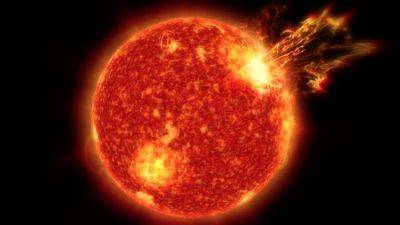
Geomagnetic storm alert issued as CME grazes Earth; Know the solar storm danger today
With Earth going through the Vernal Equinox, solar activity is impacting the planet with increasing frequency. As we approach the solar maximum, it is only expected to increase further. Just a few days ago, the Sun spewed out a Coronal Mass Ejection (CME) towards Earth. It was a huge eruption and was designated as the ‘Canyon of Fire' by NASA. This CME was hurled towards Earth and a potential solar storm danger arose. Now, forecasters have revealed that the CME has indeed impacted Earth and a geomagnetic storm alert has been issued.

Solar storm 2024: Geomagnetic storm sparks stunning auroras around the Arctic Circle
Solar storm 2024: As we approach the solar maximum, the Sun's activity is expected to increase further. The Sun has been showing its might in the last few weeks, with dangerous X-class solar flares spewing out on multiple occasions. All these solar phenomena hold the potential to cause damage on Earth to the electrical infrastructure. Technological instruments are especially at risk during these events, resulting in power blackouts and even disruption of radio communication. Just days after a G1-class geomagnetic storm hit Earth, another triggered auroras on March 3.
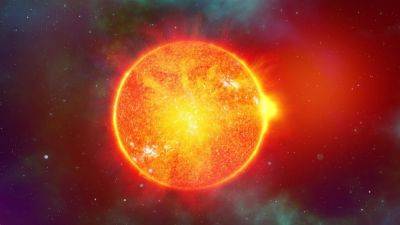
Solar storm! Sun unleashes massive X-class solar flare, triggers radio blackouts on February 9
There is no respite from solar storms for Earth. The Sun emitted a powerful X-class solar flare on February 9, reaching its peak at 8:10 a.m. (1310 GMT), resulting in shortwave radio blackouts across regions of South America, Africa, and the Southern Atlantic. Originating from sunspot AR3576, which had previously exhibited an M-class flare and plasma eruption on February 5, this recent solar flare marked a significant event in solar activity. Fortunately, by February 8, the sunspot had moved away as the sun and Earth rotated, thereby diverting the planet from the solar storm's direct trajectory.
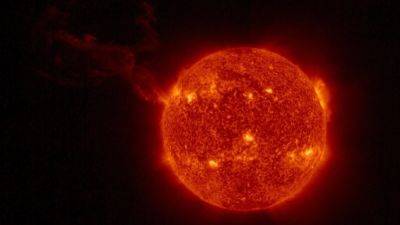
Solar storm fears on Earth rise after M8-class solar flare EXPLODES on the Sun
It appears that the Sun is not going to relent anytime soon. This week has been one of the most explosive ones when it comes to solar activity. We have seen regular solar flare eruptions and radio blackouts every day of the week, and there have been three different solar storm incidents, including a G3-class storm on the night of September 18-19, that resulted in aurora displays as far south as France. But now, another solar storm threat is building up for the Earth. Yesterday, September 20, an M8-class solar flare erupted on the Sun and released a coronal mass ejection (CME) cloud in the same direction as the Earth. Researchers are now trying to confirm whether it can hit our planet or not.
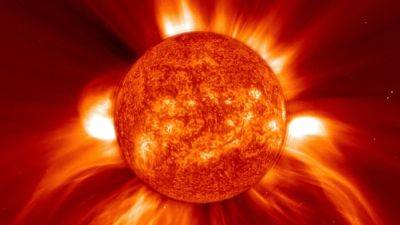
Solar storm STRIKES Earth! Intensely charged CME smashes into our planet, sparks terrifying blackouts
When it comes to terrifying solar storms, the last 24-hour period has been one of the worst since March 2023. The solar storm was triggered by a coronal mass ejection (CME) that was hurled towards the Earth's strike zone on September 18. There were speculations on whether it would hit the planet or not, but not only did it hit the Earth, it also arrived a day earlier than expected. Also, Earth was hit by multiple solar flare eruptions that caused severe radio blackouts. Know the full impact of this solar storm.
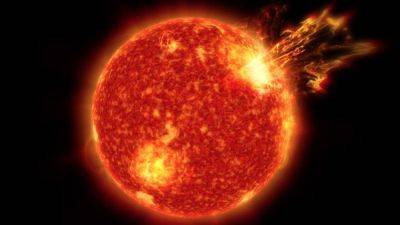
Solar storm warning! A massive CME can strike the Earth this weekend; Check details now
On Tuesday, September 12, the Earth was hit by an unexpected coronal mass ejection (CME) cloud, which triggered a powerful G2-class solar storm on Earth. The storm was moderate in intensity but it was still enough to interrupt wireless communication and trigger bright aurora lights in the higher latitudes. But the solar storm onslaught is not likely to stop anytime soon. Another CME has been unleashed from the Sun and it is again headed for our planet. As per prediction models, it is likely to reach the Earth on September 17 and deliver a glancing blow to the planet. Check the dangers that you should expect.
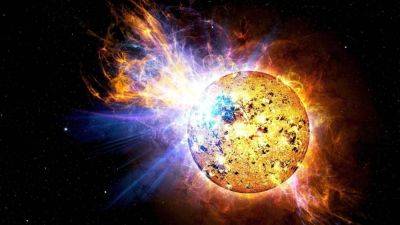
Solar storm ALERT! Solar flare eruption hurls CME towards the Earth; Will it hit?
Yesterday, September 11, two M-class solar flares erupted on the Earth-facing side of the Sun, and the latter of the two managed to release a large coronal mass ejection (CME) into space. According to data from NASA's Solar and Heliospheric Observatory (SOHO), it erupted on the notorious sunspot region AR3429 that recently came into Earth's view. The CME was noted to be in the range of Earth's strike zone and could deliver a glancing blow to our planet sparking a solar storm. But will it hit?
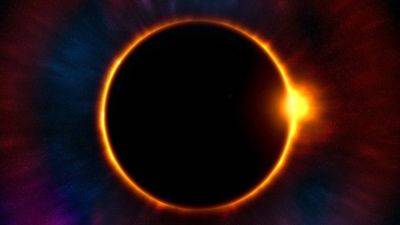
Monster sunspot triggers fears of solar storm strike on Earth; Can spark solar flare eruptions
After an unexpected solar storm event in the late night of September 2, that extended well into the morning of September 3, many scientists believe that such solar activities will now continue to increase till the equinox on September 23. During equinoxes, the Earth's magnetic poles (north and south) are at right angles to the solar wind. This makes the solar wind stronger, which can cause stronger magnetic storms. To increase the troubles, a new sunspot, AR3421, has also emerged directly in view of the Earth. The sunspot contains a mixed polarity magnetic field that can often create powerful solar flare eruptions. In case a large enough coronal mass ejection (CME) is released during the event, it can trigger a destructive solar storm.,
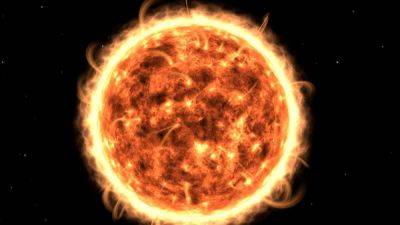
Solar storm warning issued for today; geomagnetic storm may spark auroras, power cuts
A solar storm is heading for Earth today and the Space Weather Prediction Center (SWPC) of the National Weather Service has issued a Geomagnetic Storm Watch for today, September 3, 2023. On this day, Earth may experience a G1 level geomagnetic storm, the mildest on the 1-5 scale. While this geomagnetic storm could cause some aurora displays and minor disruptions in electrical grids, navigation, and communication systems, it is not expected to be a severe event, according to spaceweather.com
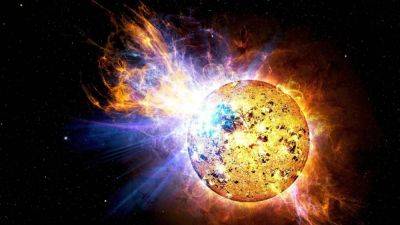
Solar storm ALERT! Magnetic filament erupts on the Sun; CME to strike tomorrow, NASA says
The last ten days have been quite uneventful in terms of Earth-directed solar activity. This was strange given there are still 6 sunspot regions present on our planet's side of the Sun. And even as the Sun nears the peak of its solar cycle in 2025, the last month has passed without any significant eruptions. But with September coming in, solar activities have again picked up. Recently, a massive magnetic filament erupted in the northern hemisphere of the Sun. The eruption resulted in a large cloud of coronal mass ejection (CME) being hurled at the Earth. NASA has confirmed that the CME will strike our planet on September 2.
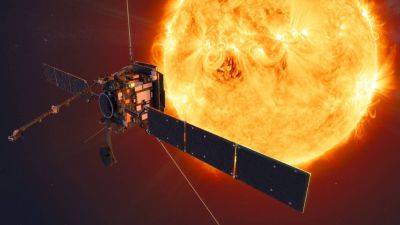
Aditya-L1: Know all about the objectives of this new ISRO mission to study the Sun
Indian Space Research Organization (ISRO) has made it possible for India to safely land on the moon and that too on a budget. With the successful Chandrayaan-3 mission, ISRO has shown its capabilities all over the world and everyone is talking about its magnificent success. It was a proud moment for India and already ISRO is ready to launch another major space mission called Aditya L1 that will thoroughly study the Sun. Let's get to know more about ISRO's upcoming mission.
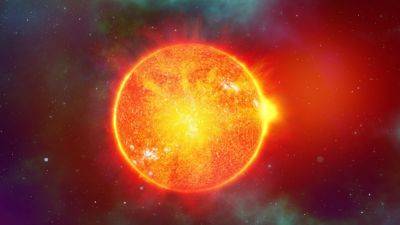
Solar storm threat for Earth rises after a helix CME was seen shooting out of the Sun
This week, the Earth has not been hit by a single solar storm. We have suffered some minor instances of radio blackouts and GPS disruptions due to solar winds, but apart from that, the Sun has remained quiet, even when a highly unstable sunspot, AR3405, has emerged in the Earth's view of the Sun. However, things could be changing. In the late hours of yesterday, strange radio emissions were detected, which is usually a warning sign for a solar flare eruption. Sure enough, a flare was set off and it did release a coronal mass ejection (CME), as per reports. The direction of the CME has not been confirmed so far, but there is a possibility that it could be Earth-bound.
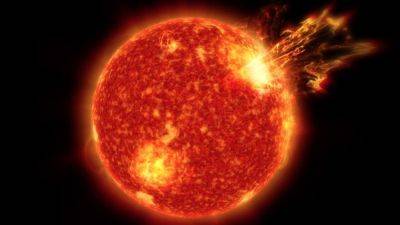
Solar storm prediction! X-class solar flares likely today, may spark blackouts
A new sunspot has entered the Earth-facing side of the Sun, and it appears to be crackling with solar flares. Luckily, so far it has not exploded, but it cannot be said just how long it will stay the same way. And perhaps that's why today's solar storm forecast has included a chance of an X-class solar flare eruption as well as the possibility of radio blackouts due to solar winds passing. It remains to be seen whether any eruptions today can release a coronal mass ejection (CME) towards the Earth and cause a further solar storm threat.
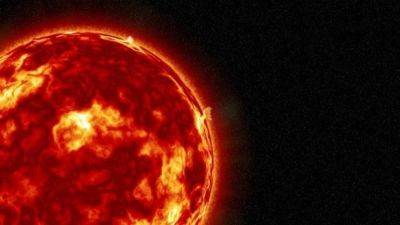
New sunspot sparks fears of terrifying solar storm on Earth
After a bit of a quiet period, the Sun is again gearing up for a period of high solar activity. In the last four days, the sunspots on the Earth-facing side of the Sun have been slowly disintegrating without exploding. But the same cannot be said about a new sunspot region, named AR3405, which will soon be on the Earth-facing side of the Sun. The sunspot has already exploded once and is considered to be brimming with M-class solar flares. Any of them can release a big coronal mass ejection (CME) and spark a major solar storm on Earth. The next few days are going to be concerning for our planet.

Inside a solar storm inferno: NASA's Stereo-A spacecraft to "feel" a solar eruption
NASA spacecraft called STEREO-A will be visiting Earth after 17 long years of watching the Sun. Even as it does so, it will be passing inside a solar storm and sending the valuable data back to Earth to better chart our closest star. In effect, STEREO-A will be inside a solar eruption and that means it's not just what STEREO-A will see as it flies by Earth, but also what it will “feel,” that could lead to major discoveries.

This 1940 solar storm was so severe it made metal wires crackle; Know all about this ‘Sunspot tornado’
The most recent example of a solar storm that caused damage to Earth's infrastructure was in February 2022 when some of the Starlink satellites launched by SpaceX were trapped in the drag caused by the energized particles in the upper atmosphere, and crashed. However, it is nothing in comparison to the storm that struck the Earth in March 1940. This solar storm was so powerful that it made metal wires crackle due to excessive static electricity and disrupted phone lines and telegraph services for 5 hours. The New York Times called it a ‘Sunspot tornado', and it remains as an example of what can happen when a solar storm really shows its wrath. Let us take a look.

Solar storm strikes the Earth! Sparked by multiple solar flares, it is expected to last 48 hours
This week was filled with high-intensity solar activity. The week began with an X-class solar flare eruption that released two separate coronal mass ejections (CME), which eventually gave way for the cannibal CME that missed the Earth narrowly. Beyond this, there were several M-class and X-class solar flare eruptions on the Sun this week, all of which have released solar particles directed towards the Earth. This excess of solar particles has slowly made its way to our planet and has sparked a solar storm event that may last between 24 to 48 hours. We have not seen a long-term solar storm like this in years. So, what kind of impact it may have on us? Let us take a look.

Solar storm threat spikes for astronauts as Sun turns volatile; CME could be fatal
Over the last few months, the effects of the Sun have been felt in the form of CME, solar storms, geomagnetic storms, and solar flares. In turn, these phenomena have sparked further events such as auroras, power blackouts, and disruption of radio communications. But why is the Sun becoming increasingly volatile? This is perhaps due to the approaching Solar Max and the Sun nearing the peak in its solar cycle. As a result, 2023 has also broken a 21-year record for the highest number of sunspots.
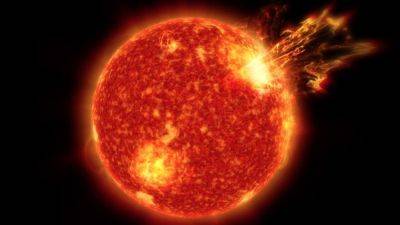
Cannibal CME is headed for the Earth today; Can spark a STRONG solar storm, says NOAA
The X1.6-class solar flare that released two powerful coronal mass ejections (CME) on August 5, has just become even more terrifying. According to a new NOAA (National Oceanic and Atmospheric Administration) model, the two CME clouds have merged, with the second, faster one, overtaking and cannibalizing the first. The result is that the merged entity has become even more powerful. Even a glancing blow from such a cloud can spark a vicious solar storm. The latest forecast says the storm will hit the Earth later today, August 8, and can produce G3-class storms.
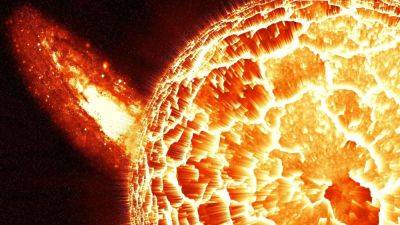
Unexpectedly strong solar storm strikes the Earth; Know the danger
Yesterday, we reported that a coronal mass ejection (CME) was headed for the Earth, and NASA models revealed that it could spark a minor solar storm event. However, things took a turn for the worse when the CME made an impact after midnight, and the initial jolt was measured to be around 22 nT (nanotesla, the unit of magnetic field in the centimeter-gram-second system). The energy released pushed the solar storm from minor to moderate levels, meaning it will have a stronger impact on the upper atmosphere. The storm is currently ongoing, and researchers are tracking the damage it caused.
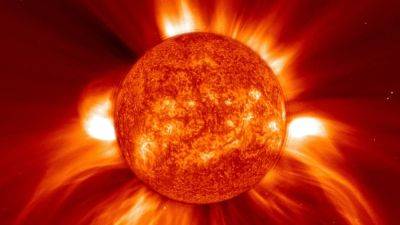
Solar storm to strike the Earth tomorrow, NOAA issues warning; Multiple CMEs approaching the planet
After the lucky escape from a coronal mass ejection (CME) earlier this week, now another solar storm threat is facing us. According to the National Oceanic and Atmospheric Administration (NOAA), a US agency tracking space weather, multiple CMEs can hit the Earth in the next two days between August 4 and 5. These were hurled by an M-class solar flare that exploded on the Earth-facing side of the Sun on August 1. This was part of a major instability event of the active sunspot AR3380. Now, as the CMEs approach, there are fears that it can spark an intense solar storm event, damaging satellites, shortwave radio communication, and more. Check the details.
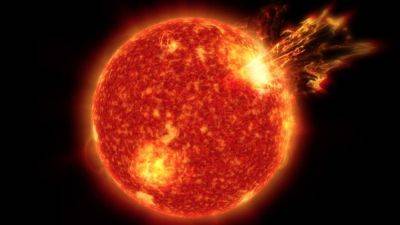
Deadly solar storm coming towards Earth today; CME clouds approaching fast
The last solar activity in the month of July will finally show consequences in August as the coronal mass ejection (CME) cloud that was released during a magnetic filament eruption on July 28 is expected hit the Earth in a few hours today, August 1. The event was a major solar activity that sparked radio blackouts in some regions on Earth. The CME cloud that was released contains both highly charged particles and a high velocity, a combination of which can spark a powerful solar storm today. Check details.
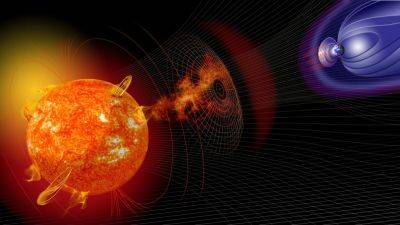
Geomagnetic storm threatens radio communications! Blackouts possible
A new geomagnetic storm is set to unleash its fury, potentially resulting in radio blackout in the coming days. Recent reports from SpaceWeather.com reveal increased activity in the eastern limb of the Sun, with the emergence of four new sunspots. Although a bright CME that occurred on July 28th will not directly hit Earth, there are concerns that future CMEs from the new sunspots could impact our planet. Brace yourselves for the potential aftermath of these upcoming CMEs.

Shocking! CME with SEVERE solar storm potential hits Solar Orbiter satellite at 1500 km per second
After the Earth was struck by two different coronal mass ejection (CME) clouds in successive days, many believed this was the end of the Sun's assault during the week at hand. But another event has shocked the astronomy community. On July 26, a farside flare eruption released an extremely powerful CME and it hit the European Space Agency (ESA) operated Solar Orbiter satellite. Luckily, the CME cloud delivered a glancing blow as it was moving in a different direction, but if it was Earth-directed it could have sparked a severe solar storm event owing to its incredible intensity.
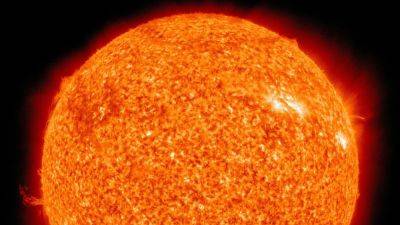
Solar storm BOMBARDMENT! After a CME hit yesterday, another is likely to strike Earth soon
It appears that yesterday's solar storm was not the end of troubles for the planet, as another coronal mass ejection (CME) cloud is expected to strike the Earth later today, July 27. The CME was part of the released mass that escaped the Sun during the solar flare eruption on July 23. Researchers have been tracking the CME, but yesterday, another CME made an impact unexpectedly. It is believed to be another smaller CME that came from a blind spot. The real threat is still yet to hit, as the incoming CME is much larger and can spark an intense solar storm.

UNEXPECTED! Solar storm strikes Earth ahead of schedule; CME hit from blind spot
Yesterday, it was reported that a solar storm will strike the Earth tomorrow, on July 27, after a coronal mass ejection (CME) was seen moving towards Earth. However, the planet has been struck with a solar storm today itself, leading to many researchers being perplexed. Some believe that it is the same CME that somehow accelerated and struck ahead of time, while others believe there might have been another CME that was overlooked by the satellites and hit us from a blind spot. Either way, the solar storm today has created further complications for Earth, as any incoming CMEs will now amplify the overall intensity of the storm.

Sun blasts CME towards the Earth, SCARY solar storm strike expected soon; Know the danger
Last week, the Earth suffered multiple hits by the Sun, including two separate solar storms and a couple of radio blackouts. This was one of the most active weeks for solar activity after April, and researchers believe that the Sun is picking up the intensity again, as we approach the autumnal equinox (historically, the highest solar activity period, along with the vernal equinox) in September. As a sign of that, another solar storm has been predicted to strike the Earth on July 27, two days from now, on the back of a halo coronal mass ejection (CME).
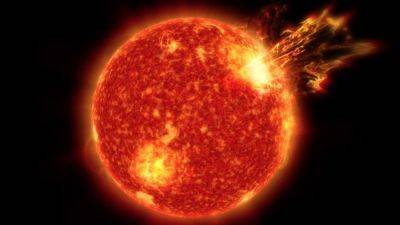
How solar storms can affect technology on Earth
The Sun is at the centre of all activity in our solar system. So, ever wondered what is solar activity? Well, solar activity includes coronal mass ejections, high-speed solar wind, solar flares and solar energetic particles and they all are driven by the influence of the solar magnetic field. Yes, all of it is powered by our volatile Sun. Interesting, no? So, do you know that these solar activities may also affect the technology spread across the globe and in space by humanity? Yes, these solar storms created by the Sun can have devastating effect on technology on Earth from power grids, Internet to satellites. Yes, even your mobile phone can be affected.
Popular Topics
Our site gametalkz.com offers you to spend great time reading CME latest Tips & Guides. Enjoy scrolling CME Tips & Guides to learn more. Stay tuned following daily updates of CME hacks and apply them in your real life. Be sure, you won’t regret entering the site once, because here you will find a lot of useful CME stuff that will help you a lot in your daily life! Check it out yourself!
